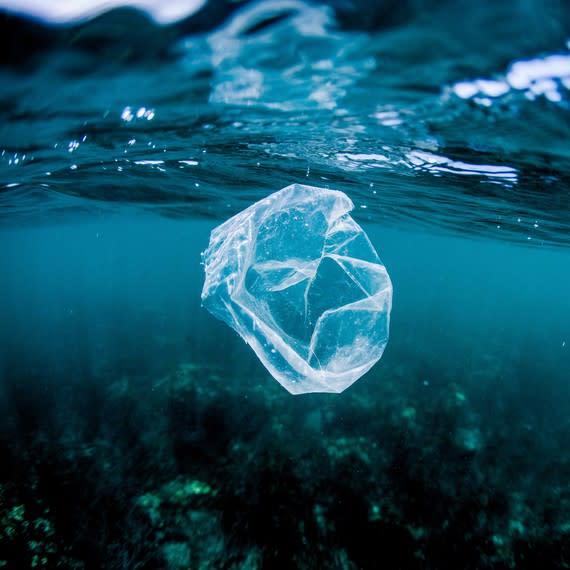Researchers Have Found Microscopic Plastic Particles Deep in the Ocean

A new scientific study conducted at two locations near the Monterey Bay National Marine Sanctuary found that the plastic pollution in our oceans is much worse than previously believed. Using underwater robots, scientists from Scripps Institution of Oceanography at the University of California, San Diego discovered that the highest concentration of plastic particles exists in the ocean between 200 to 600 meters—what's more, the amount found there is nearly four times higher than what was found at the surface. Because these plastic particles extend from the surface of the ocean all the way to the seafloor, more animals are ingesting them.
So, do scientists fully understand how much plastic is in the ocean? "That question has mostly been answered from looking at the best available data at the surface of the ocean, but we know the ocean is a very large three-dimensional space, so we have to account for the plastic below the surface," Anela Choy, an assistant professor at the Scripps Institution of Oceanography at UC San Diego, told NBC News. Choy and her team used remotely operated vehicles to collect samples at various depths throughout the ocean. Based on their sampling, the lowest concentrations of plastic particles existed at the ocean surface.
Related: Survey Reveals Ocean's Plastic Pollution Is Much Worse Than Scientists Originally Thought
Choy notes that these findings could account for the discrepancy between the amount of plastic found in the ocean versus the much higher levels found on land. The marine microplastics exist in the seafloor food webs, where particle feeders like the pelagic red crabs and giant larvaceans live.
An estimated eight million metric tons of plastic leaks into the ocean every year, according to a 2016 study by the World Economic Forum. According to their published report, that's the "equivalent to dumping the contents of one garbage truck into the ocean every minute." Currently, the human health impact of chemical exposure and plastic debris consumption from seafood remains unknown.